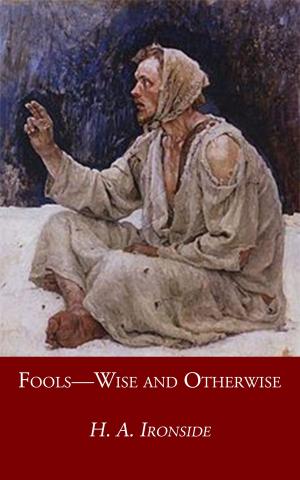The Gospel in the Stars, or, Prímeval Astronomy
Nonfiction, Religion & Spirituality, Christianity, Christian Literature, Astrology, New Age| Author: | Joseph A. Seiss | ISBN: | 1230002031101 |
| Publisher: | CrossReach Publications | Publication: | December 1, 2017 |
| Imprint: | Language: | English |
| Author: | Joseph A. Seiss |
| ISBN: | 1230002031101 |
| Publisher: | CrossReach Publications |
| Publication: | December 1, 2017 |
| Imprint: | |
| Language: | English |
It may seem adventurous to propose to read the Gospel of Christ from what Herschel calls “those uncouth figures and outlines of men and monsters usually scribbled over celestial globes and maps.” So it once would have seemed to the writer. But a just estimate of the case cannot be formed without a close survey of what these figures are, what relations they bear to each other, whence they originated, and what meaning was attached to them by the most ancient peoples from whom they have been transmitted to us. Such a survey the author of this volume has endeavored to make. From an extended induction he has also reached conclusions which lead him to think he may do good service by giving publicity to the results of his examinations.
The current explanations of the origin and meaning of the constellations certainly are not such as should satisfy those in search of positive truth. Herschel characterizes them as “puerile and absurd.” They are nowhere to be found outside of Greece and Rome and modern works which have thence derived them. They are part of the staple in the theories and arguments of infidelity. The more ancient and more knowing peoples never so explained these celestial signs, but uniformly regarded them as divine in source and sacred in significance. Even Greece and Rome never could separate them from their worship, their gods, and their hopes of futurity, whilst some of their best authors devoutly referred to them as divine. The theory that they have come from natural observations of the seasons and man’s occupations in different parts of the year is but a rationalistic conjecture, unsupported by facts or analogy. It is the mere guess of men pressed by the presence of a great and masterly system marked on the heavens for which they knew not how to account—a guess which will not stand the test of its own assumptions or common sense, much less the light now in the world’s possession respecting the remoter antiquities of man. That some Greek and Roman authors, who never understood any of these things,[1] should indulge in such unfounded suppositions is not remarkable; but that people of learning and science, jealous of building on anything but solid grounds, should still entertain and reiterate them for ascertained verities, is very surprising. And if men are constrained thus to accept and repeat them from sheer inability otherwise to solve the problem, it should convince them that they have not yet risen to the true character and dignity of these ancient records, and dispose them to a fresh and searching re-examination of the whole subject, to which this book is meant to furnish some humble aid.
It may seem adventurous to propose to read the Gospel of Christ from what Herschel calls “those uncouth figures and outlines of men and monsters usually scribbled over celestial globes and maps.” So it once would have seemed to the writer. But a just estimate of the case cannot be formed without a close survey of what these figures are, what relations they bear to each other, whence they originated, and what meaning was attached to them by the most ancient peoples from whom they have been transmitted to us. Such a survey the author of this volume has endeavored to make. From an extended induction he has also reached conclusions which lead him to think he may do good service by giving publicity to the results of his examinations.
The current explanations of the origin and meaning of the constellations certainly are not such as should satisfy those in search of positive truth. Herschel characterizes them as “puerile and absurd.” They are nowhere to be found outside of Greece and Rome and modern works which have thence derived them. They are part of the staple in the theories and arguments of infidelity. The more ancient and more knowing peoples never so explained these celestial signs, but uniformly regarded them as divine in source and sacred in significance. Even Greece and Rome never could separate them from their worship, their gods, and their hopes of futurity, whilst some of their best authors devoutly referred to them as divine. The theory that they have come from natural observations of the seasons and man’s occupations in different parts of the year is but a rationalistic conjecture, unsupported by facts or analogy. It is the mere guess of men pressed by the presence of a great and masterly system marked on the heavens for which they knew not how to account—a guess which will not stand the test of its own assumptions or common sense, much less the light now in the world’s possession respecting the remoter antiquities of man. That some Greek and Roman authors, who never understood any of these things,[1] should indulge in such unfounded suppositions is not remarkable; but that people of learning and science, jealous of building on anything but solid grounds, should still entertain and reiterate them for ascertained verities, is very surprising. And if men are constrained thus to accept and repeat them from sheer inability otherwise to solve the problem, it should convince them that they have not yet risen to the true character and dignity of these ancient records, and dispose them to a fresh and searching re-examination of the whole subject, to which this book is meant to furnish some humble aid.















